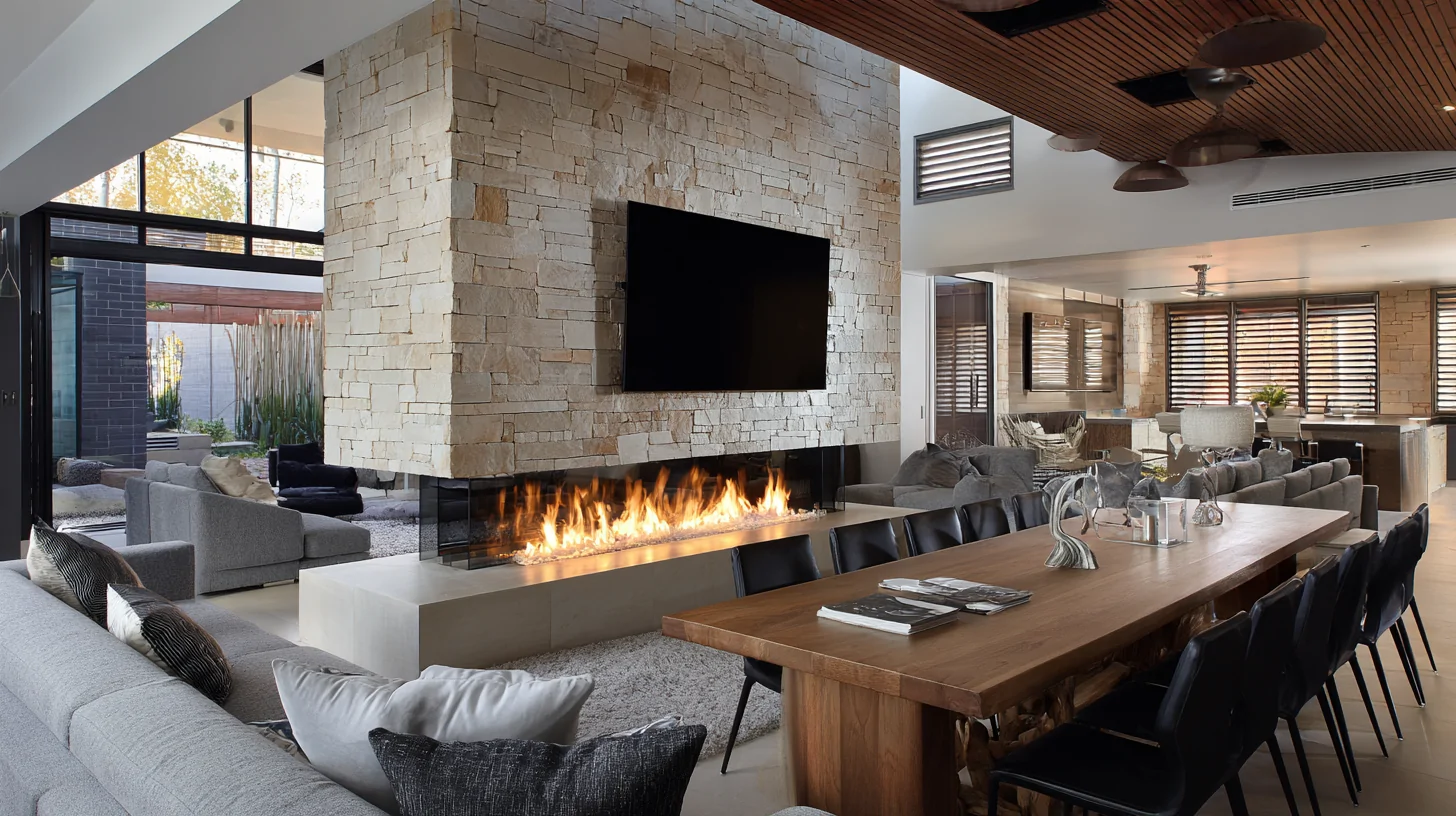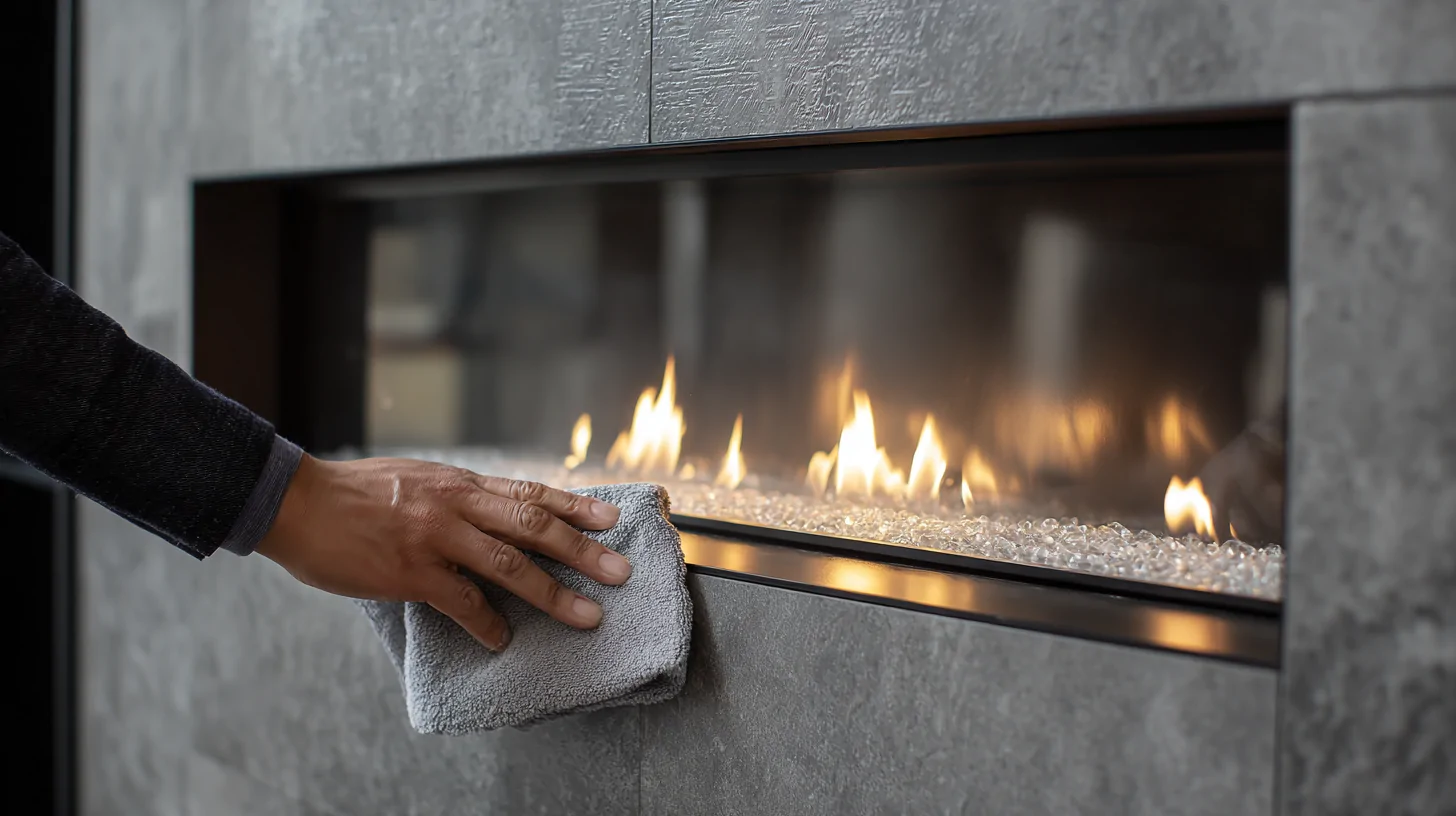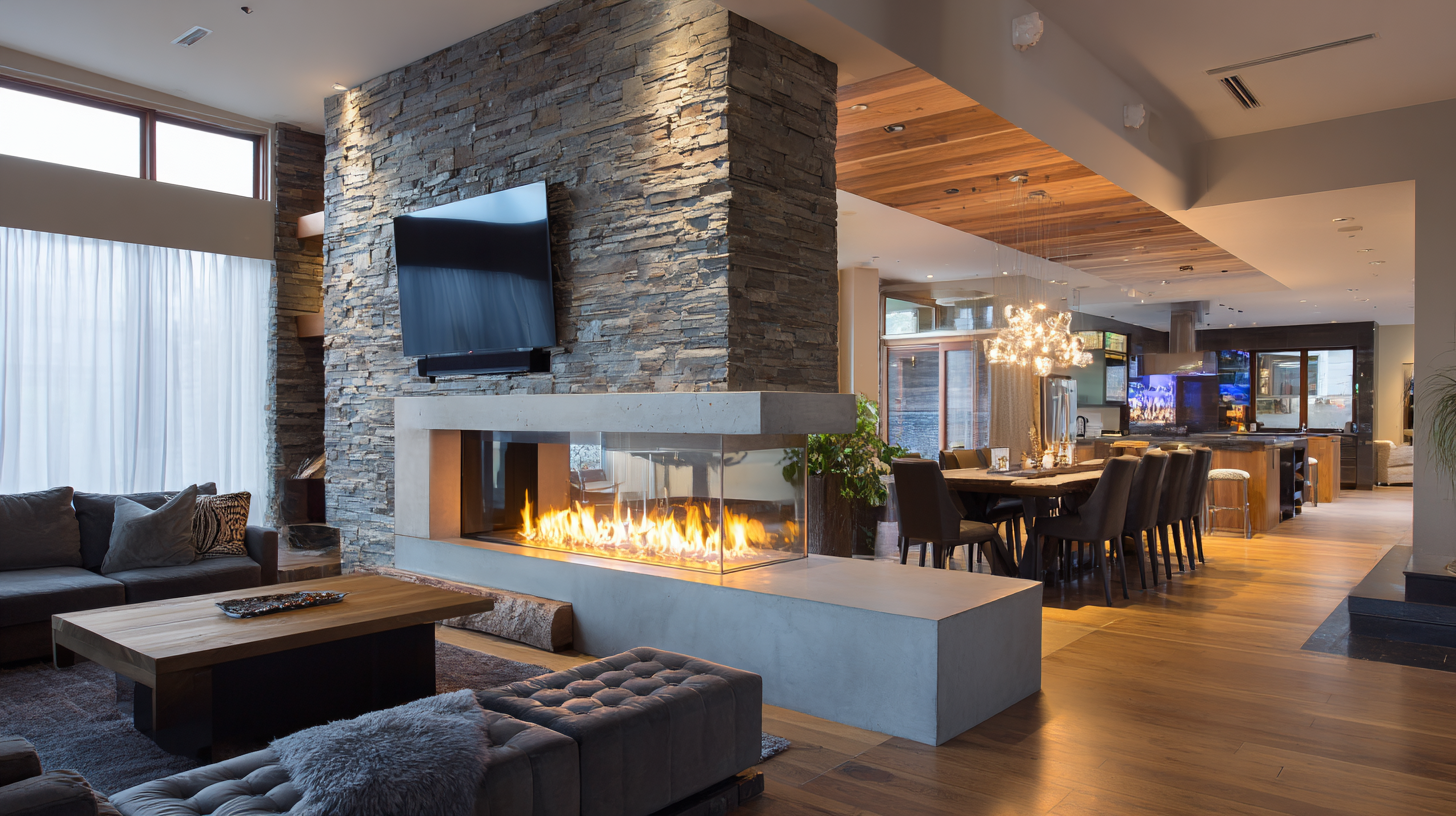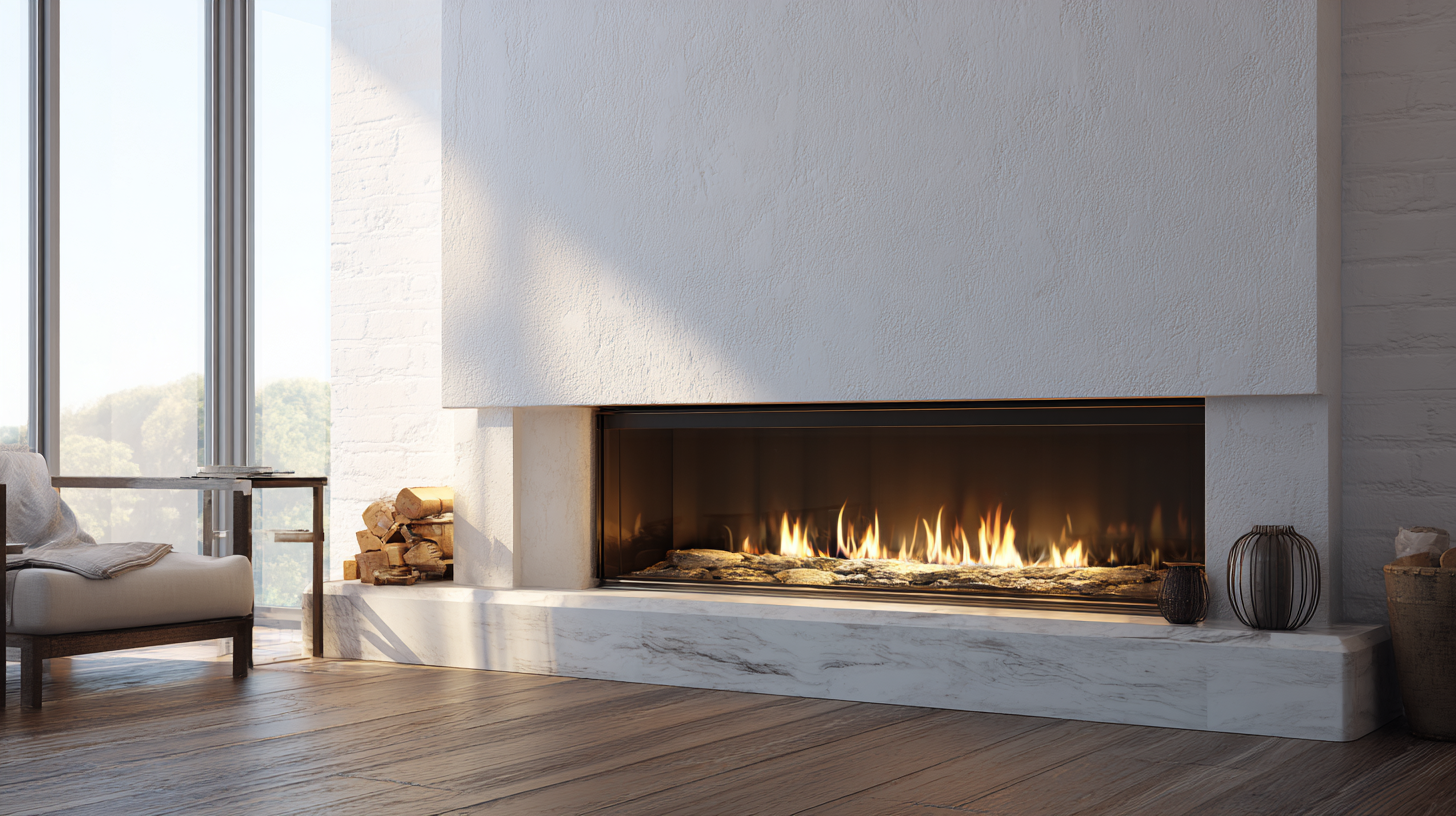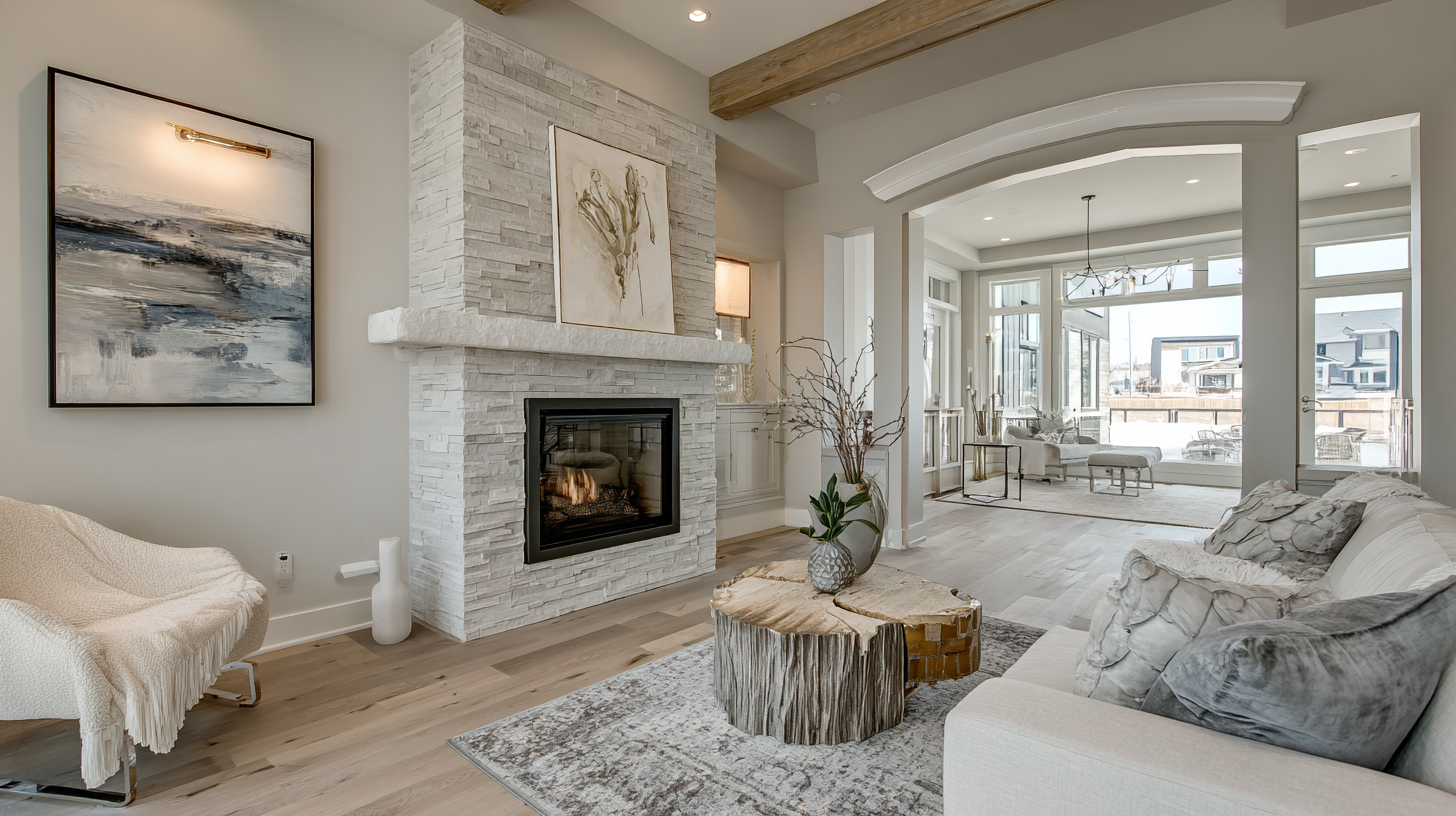Outline
-
- Introduction
- Cleaner Heat, Different Maintenance
- Maintenance Breakdown
- Monthly DIY Care for Gas Fireplaces
- Annual Professional Inspection
- Warning Signs You Need Service
- Carbon Monoxide & Venting Safety
- Chimney Caps & Vent Integrity
- Seasonal Preparation Checklist
- FAQs
- Ready for Professional Help?
- Final Thoughts
Introduction
Fireplaces bring warmth and ambiance—but not all fireplaces are created equal. Whether you’re cozying up to crackling wood or enjoying the sleek convenience of a gas flame, proper care ensures safety, efficiency, and a long-lasting fireplace experience.
Cleaner Heat, Different Maintenance
Wood fireplaces burn logs and produce ash and creosote—an extremely flammable residue that accumulates inside the flue. The Chimney Safety Institute of America (CSIA) recommends annual sweeping once buildup reaches about ⅛″ :contentReference[oaicite:1]{index=1}.
Gas fireplaces burn much cleaner—no soot, no ash—but still require annual professional inspections of glass, logs, burners, gas lines, vents, and safety components :contentReference[oaicite:2]{index=2}.
Maintenance Breakdown
| Task | Wood Fireplace | Gas Fireplace |
|---|---|---|
| Ash removal | After each fire | N/A |
| Creosote sweep | Annual | N/A |
| Glass cleaning | Seasonal | Monthly/pre-season |
| Vacuum/dust logs & burners | Seasonal | Monthly or pre-season |
| Pilot/light valve/framing inspection | N/A | Monthly |
| Pro inspection & servicing | Annual chimney sweep | Annual gas specialist |
| Cap/vent check | Annual | Annual |
Cleaning frequency varies by usage—heavier usage warrants more frequent dusting and checks.
Monthly DIY Care for Gas Fireplaces
- Cool and turn off gas before cleaning, as advised by Regency: always let the unit cool fully :contentReference[oaicite:3]{index=3}.
- Clean glass using a non‑ammonia, fireplace-specific cleaner to avoid residue and streaking :contentReference[oaicite:4]{index=4}.
- Vacuum logs, burners, louvers, and vents using gentle suction to clear dust and debris :contentReference[oaicite:5]{index=5}.
- Inspect pilot flame for a steady blue color—yellow or flickering flames may hint at incomplete combustion :contentReference[oaicite:6]{index=6}.
- Replace remote batteries yearly (some manuals advise more often)—low power can cause ignition issues :contentReference[oaicite:7]{index=7}.
- Test smoke & CO detectors monthly for functioning—CO is odorless and lethal if undetected :contentReference[oaicite:8]{index=8}.
Annual Professional Inspection
According to the Valor guide, your annual service should include inspection of gas lines, pressure testing, burner cleaning, log reset, vent checks, ignition components, and safety sensors :contentReference[oaicite:9]{index=9}.
Warning Signs You Need Service
Watch for these red flags—any one warrants immediate attention:
- Weak or flickering flame: may indicate airflow problems :contentReference[oaicite:10]{index=10}.
- Soot on glass/logs: sign of incomplete burn or clogged burners :contentReference[oaicite:11]{index=11}.
- Unusual odors: rotten-egg smell means gas leak; smoky smell indicates dust burning :contentReference[oaicite:12]{index=12}.
- Pilot light issues: frequent extinguishing suggests thermocouple or valve trouble :contentReference[oaicite:13]{index=13}.
- Hissing or whistling: often a sign of burner or vent problems :contentReference[oaicite:14]{index=14}.
Carbon Monoxide & Venting Safety
Gas fireplaces vent combustion byproducts, including carbon monoxide (CO). A blocked chimney or vent can push CO back indoors, which is odorless, colorless, and deadly :contentReference[oaicite:15]{index=15}.
Symptoms of CO exposure include dizziness, headache, nausea, confusion, and shortness of breath :contentReference[oaicite:16]{index=16}. Install CO detectors near sleeping areas and test them monthly.
Chimney Caps & Vent Integrity
Chimney caps prevent blockages from debris, wildlife, or creosote buildup—any obstruction can impair draft and cause soot or CO buildup indoors :contentReference[oaicite:17]{index=17}. Annual cap inspection should be part of gas fireplace servicing :contentReference[oaicite:18]{index=18}.
Seasonal Preparation Checklist
Before the heating season:
- Gas units: vacuum inner components, clean glass, inspect pilot and sensors, check cap/vent clearance.
- Wood units: sweep flue, clean ashes, inspect damper and creosote.
- All units: confirm functional smoke & CO alarms, and line up your annual professional inspection :contentReference[oaicite:19]{index=19}.
FAQs
Q1: How often should I clean my gas fireplace?
Vacuum and dust every 2–4 months; schedule a professional cleaning before heating season :contentReference[oaicite:20]{index=20}.
Q2: Can I remove the glass for cleaning?
Yes—once cool and off. Use a non‑ammonia cleaner and follow the manufacturer’s removal/reinstallation instructions :contentReference[oaicite:21]{index=21}.
Q3: Is it normal for the glass to stay hot?
Yes—glass can remain hot for up to 45 minutes. Use a barrier to protect children and pets :contentReference[oaicite:22]{index=22}.
Q4: Why is there a burning smell on first use?
The factory residue releases odor during the “burn-in” (3-12 hrs); it dissipates after this period :contentReference[oaicite:23]{index=23}.
Q5: Can a gas fireplace produce carbon monoxide?
Yes—blocked vents or poor combustion can cause CO leakage. Annual inspection and functional CO detectors are critical :contentReference[oaicite:24]{index=24}.
Q6: Why won’t my fireplace light?
Check gas supply, pilot light, ignition components, batteries, and thermostat. For persistent issues, call a professional :contentReference[oaicite:25]{index=25}.
Q7: Do I need a chimney or vent?
Yes—all gas fireplaces need venting. Direct-vent models seal combustion air; vent-free units are restricted or regulated :contentReference[oaicite:26]{index=26}.
Q8: Can I convert gas to wood?
No—it is unsafe, violates code, and voids warranties :contentReference[oaicite:27]{index=27}.
Ready for Professional Help?
If it’s been a year since your last inspection—or you’ve noticed warning signs—it’s time for a professional check. Our trusted partners at gasfireplacecleaning.com offer expert cleaning, safety testing, burner tuning, and full vent inspections.
Final Thoughts
Wood fireplaces need frequent cleaning to manage creosote; gas fireplaces are cleaner, but require annual professional maintenance, glass and burner cleaning, and annual cap/vent checks. Watch for soot, flame issues, odors, or pilot problems—don’t wait. Regular upkeep ensures safe, cozy fires all winter long.

